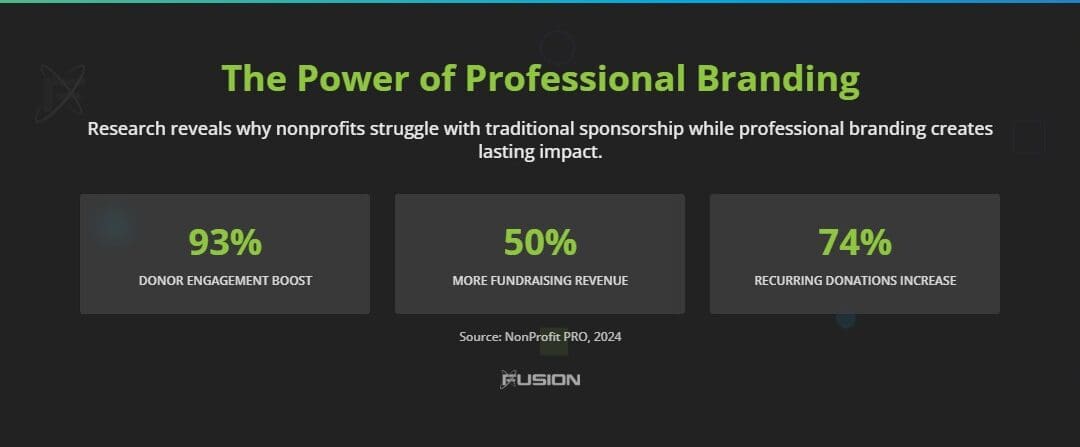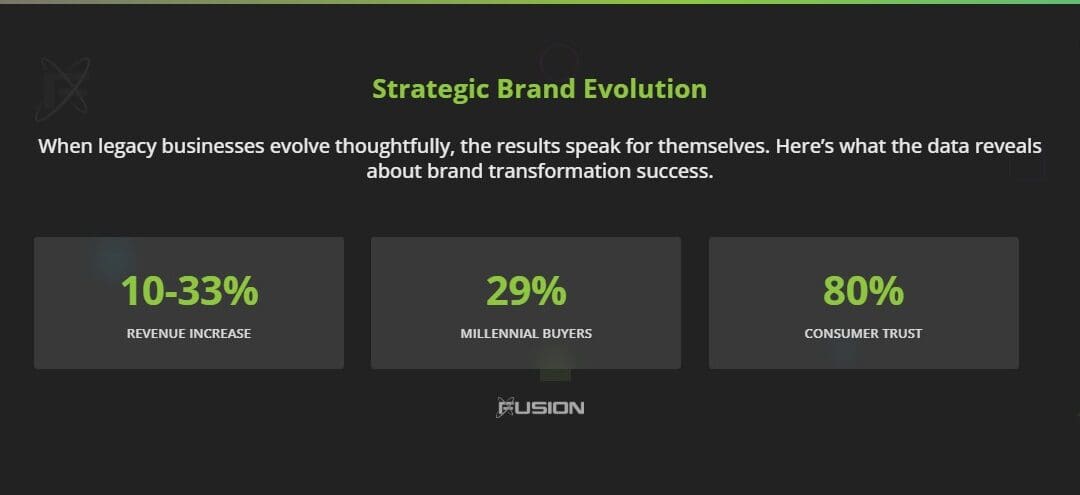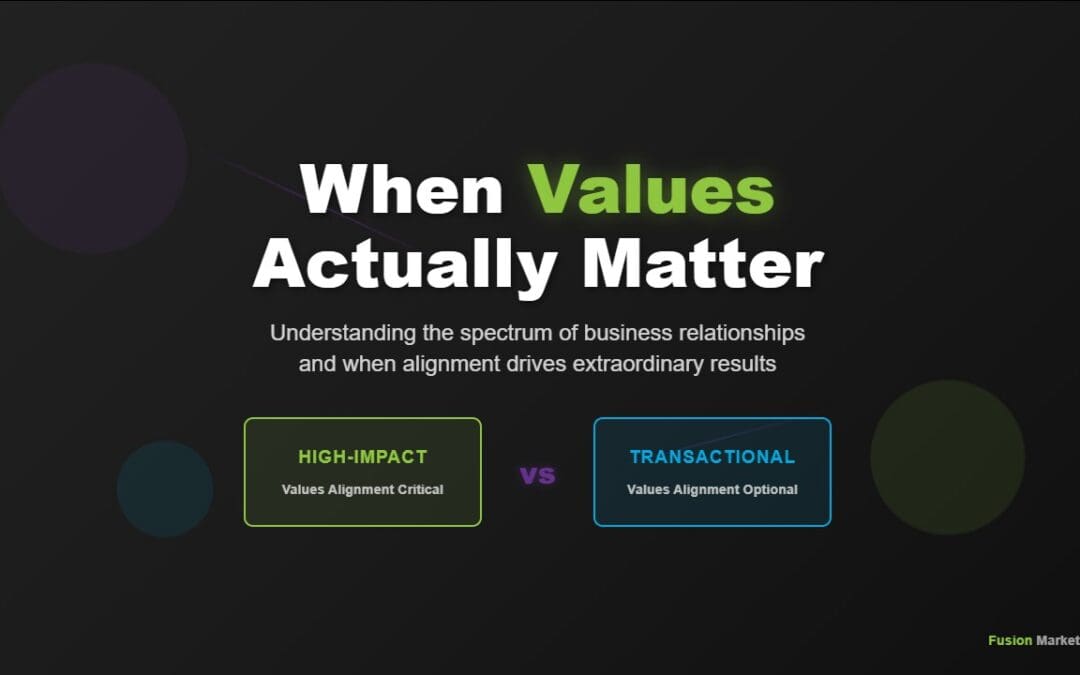In the world of vinyl, two contenders vie for supremacy: Cast and Calendered. Each has unique characteristics, strengths, and applications. Still, deciding between cast and calendered vinyl can seem daunting for the uninitiated.
But fear not; this article explores the epic showdown between these two vinyl variants. We will explore their distinct properties, advantages, and drawbacks, helping you make an informed decision.
Whether you’re a seasoned professional or a novice in the field, join us as we embark on this journey and finally settle the debate: Are you Team Cast or Team Calendered?
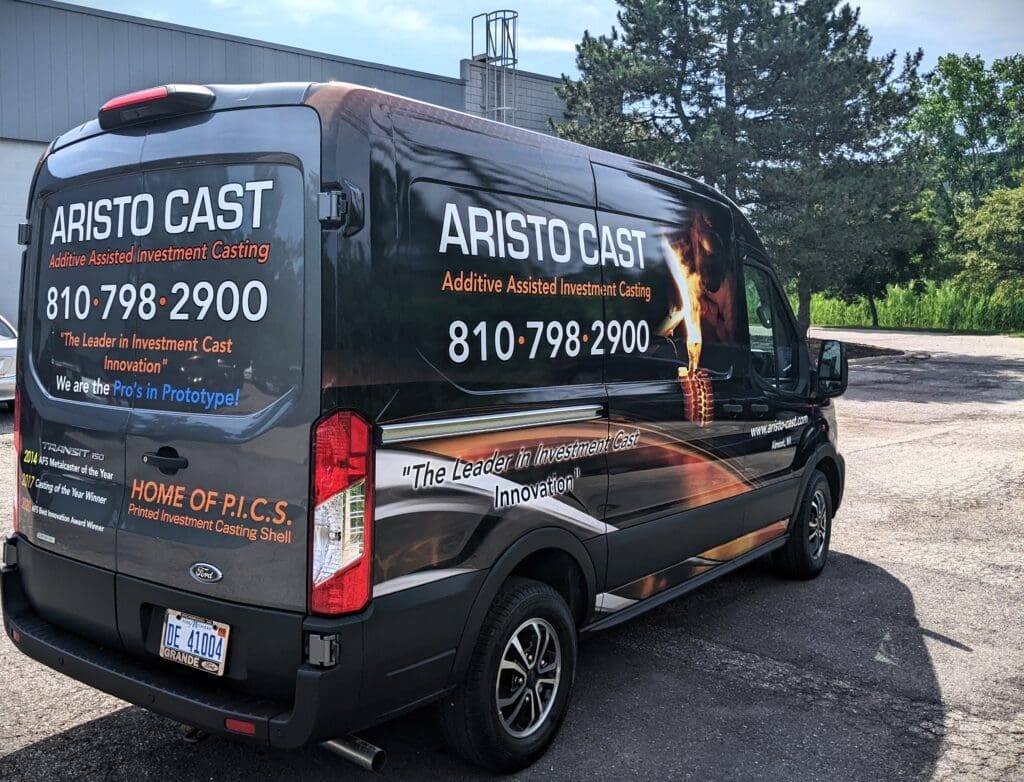
Manufacturing Process: The Battle Begins
In the world of vinyl, cast and calendered films reign supreme. They might seem similar, but there’s more to them than meets the eye.
Cast Vinyl
This type of vinyl begins as a liquid mixture of raw materials, including polyvinyl chloride (PVC), heat stabilizers, and polymeric plasticizers. The concoction is poured onto a casting sheet and baked in an oven. The heat allows the solvents to evaporate, leaving behind a solid film.
This process gives us those thin, flexible cast vinyl films we often see used for vehicle wraps. Cast films’ flexibility means they can easily handle complex curves and surfaces, providing a smooth finished look that’s as sleek as a panther in a tuxedo! (I hope you are envisioning this dapper panther with a monocle and a pocket watch—I know I am!)
Calendered Vinyl
This material starts its journey with a rough and tough kneading process, blending PVC and monomeric plasticizers. It’s then rolled out under high temperature, resulting in thicker films that may not be as flexible as their cast counterparts, but they’re durable enough to withstand 3-6 years on a flat surface.
The Biggest Difference
So, what’s the main difference between cast vinyl vs. calendered vinyl?
Well, think of it like choosing between a gymnast and a weightlifter.
Cast vinyl is thinner and more flexible and offers a high-gloss finish. It’s the industry premium, the go-to for applications that require superior performance and longevity. It’s the perfect material for complex surfaces.
Calendered vinyl, on the other hand, is thicker. It’s ideal for simple surfaces and short-term applications. It might not have the same UV stability or life span as cast vinyl, but it is cheaper, making it an excellent option for those on a budget.
Ultimately, choosing the right vinyl comes down to understanding these two main types and their properties. Both have strengths and weaknesses and play crucial roles in the manufacturing of our daily items. Whether you’re after the flexibility and smooth finish of cast films or the durability and cost-effectiveness of calendered films, there’s a type of vinyl out there that’s just right for your needs!
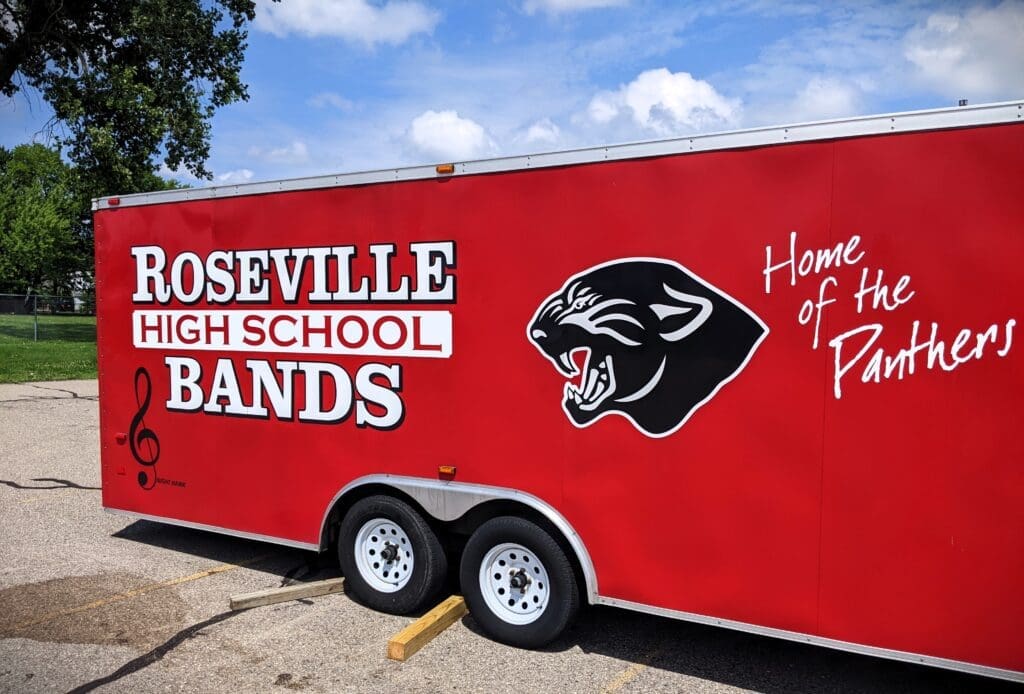
Durability, Flexibility, and Performance: The Main Event
Now that we’ve unpacked the manufacturing process and critical differences between cast and calendered vinyl, let’s move on to the main event: comparing their durability, flexibility, and performance.
This section will put these two materials to the test, analyzing how they stack up in these critical areas. Whether you’re looking for longevity with rigorous use, versatility for various applications, or peak performance under testing conditions, let me help you understand which type of vinyl can deliver the desired results. Let’s dive in!
Cast Vinyl
First up in the ring, we’ve got cast vinyl. This guy is the life of the party, flexible and ready for anything. It starts off as a liquid mixture of all sorts of cool stuff like polyvinyl chloride (PVC), heat stabilizers, and polymeric plasticizers. This mix is poured onto a casting sheet and heated until the solvents evaporate, leaving behind a thin, solid film. This process makes cast vinyl perfect for those tricky jobs requiring something that can handle complex curves and surfaces. Think vehicle wraps or intricate graphics. It’s like a gymnast, bending and twisting without breaking.
Plus, it offers a smooth, high-gloss finish. If cast vinyl were a car, it’d be a sleek sports car—the kind that really turns heads every time it drives by!
Calendered Vinyl
On the other hand, we’ve got calendered vinyl. This is reliable, hardworking vinyl. It’s made by mixing PVC and monomeric plasticizers and rolling them out under high temperatures. The result is a thicker, more durable film.
Calendered vinyl might not be as flexible as cast vinyl, but it’s perfect for flat or simple surfaces. It’s your trusty old pickup truck, always ready to do the job. And while it doesn’t have the same UV stability or life span as cast vinyl, it’s generally lower cost, making it a great choice when watching your pennies.
And the Winner Is…
So, who wins in the battle of cast vinyl vs calendered vinyl? Well, that really depends on what you need. Cast vinyl is your go-to if you’re after flexibility and long-lasting performance. But if you need something durable and cost-effective for simpler tasks, calendered vinyl has your back.
Remember, choosing the right vinyl isn’t about picking the “best” one. It’s about understanding the strengths and limitations of each type and finding the one that fits your needs like a glove. So whether you’re wrapping a vehicle or creating a sign, choose the right vinyl for the job. Your project (and your wallet) will thank you!
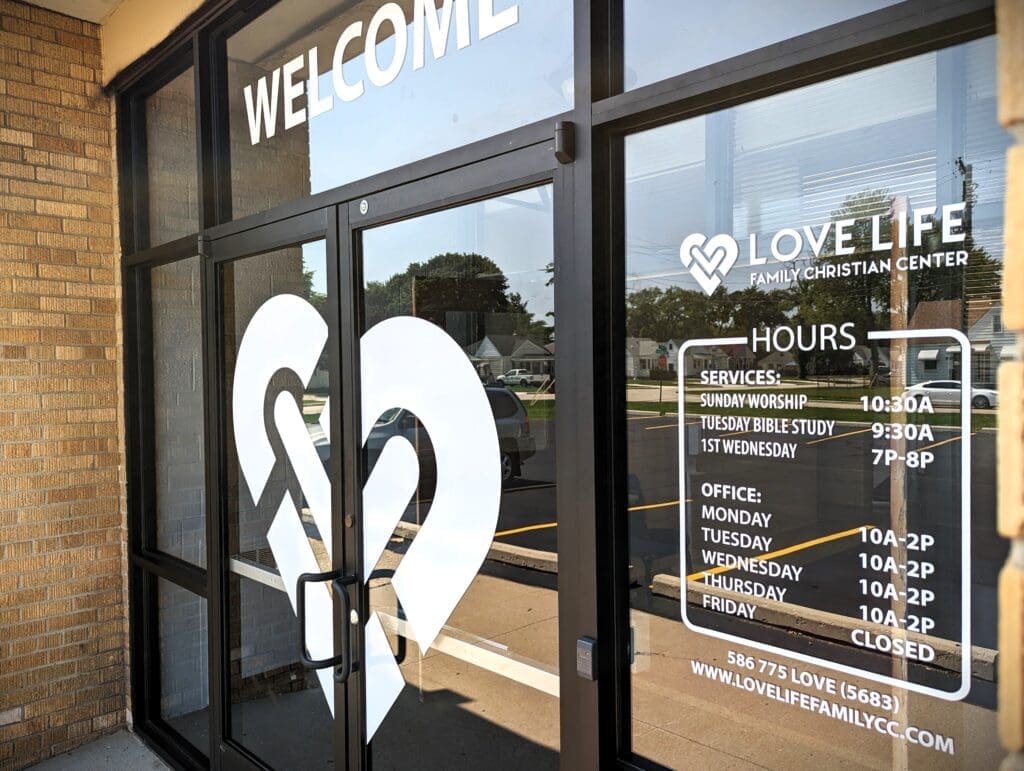
Cost, Life Span, Thickness, and Conformability: The Final Showdown
This time, we’re comparing cast vinyl with calendered vinyl in a showdown of cost, lifespan, thickness, and conformability. Let’s dissect these elements individually and see which type of vinyl takes the crown in each category!
Grab your popcorn; this is going to be epic!
Cost
First up, let’s talk about the moolah. Regarding cost, calendered films are like that budget-friendly diner down the street. They might not have all the bells and whistles, but they do the job without breaking the bank.
Cast vinyl, on the other hand, is more like a swanky restaurant. It might cost you a bit more, but boy, does it deliver on performance!
Life Span
Cast vinyl films are built to last, enduring the elements better than their calendered counterparts. Cast vinyl can last up to 10 years or more, making it an excellent choice for long-term applications. So, cast vinyl has your back if you’re looking for something with long-term durability.
On the other hand, calendered vinyl has a shorter lifespan but can still pack quite a punch in terms of durability and performance. While not as robust as cast vinyl, it can still have a life span of around 3-5 years. This type of vinyl is perfect for short-term projects or if you need to switch up your design frequently.
Thickness
Cast vinyls are like the thin, comfy T-shirt you love to wear on a casual day out. They’re thin and flexible, hugging every curve to provide a smooth, finished look that just feels right.
Calendered films, however, are more like sturdy leather jackets. These thicker films offer higher-grade durability, perfect for those more demanding jobs.
Conformability
If you’ve got complex surfaces to deal with, cast vinyl films are your best bet. They’re able to bend and twist to fit every nook and cranny.
Calendered vinyl, on the other hand, prefers flat and uncomplicated surfaces, much like how I like my mornings – calm and coffee-filled.
Who Wins the Showdown?
If you’re looking for the actual winner, that’s going to depend on your project.
Cast vinyl might be the way to go if you want premium vinyl that offers better performance for irregular surfaces and a longer lifespan. But if you’re after a lower-cost option with decent durability to install on a simple surface that can be changed up more regularly, calendared vinyl could be your champion.
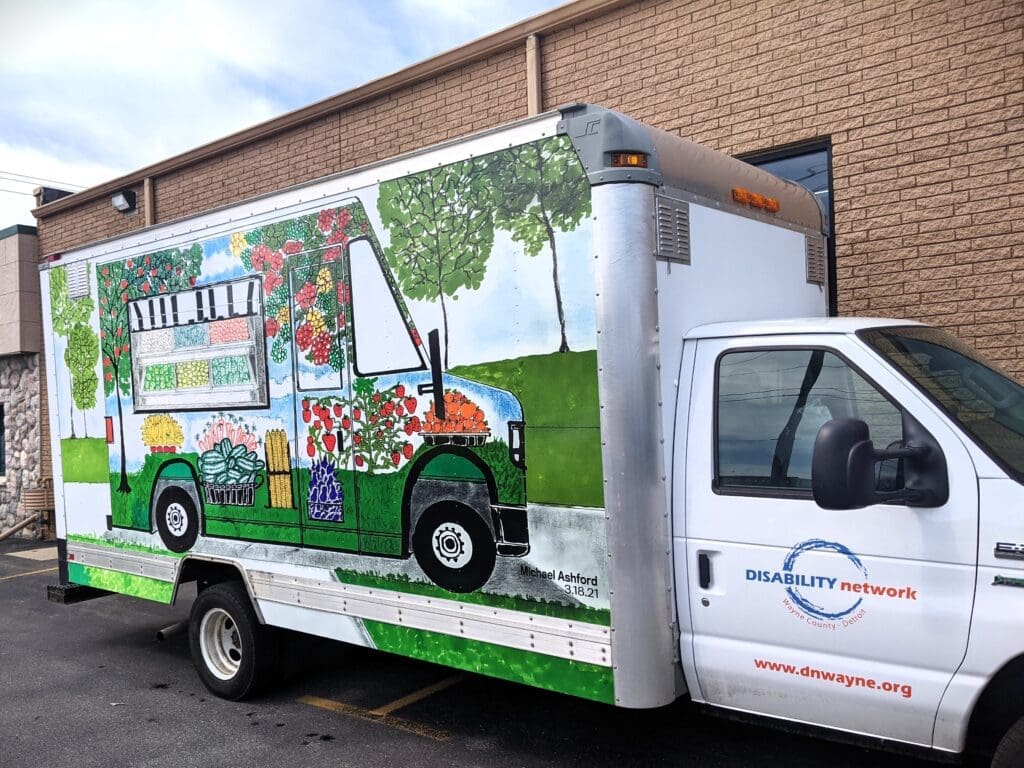
Examples and Installation: The Encore
Now that we’ve discussed the primary characteristics and compared the two heavyweights of the vinyl world, it’s time to look at some real-world applications and delve into the installation process.
Let’s walk through examples of where and how these two types of vinyl are typically used and guide you through the installation process!
Examples of Cast Vinyl Usage
Let’s break down some of the superstar roles cast vinyl films love to play in our everyday lives.
- The Car Couturier: Cast vinyl films are the Coco Chanel of vehicle wraps, giving them a glossy (or matte) finish that screams “Haute Couture!” Plus, their UV stability is like the world’s best sunscreen, keeping your ride looking fresh and vibrant.
- The Interior Designer: With their flexibility and thinness, cast vinyl films can easily tackle complex surfaces like walls or furniture, transforming them from drab to fab!
- The Outdoor Adventurer: High-quality decals for outdoor use love cast vinyl. It’s the top pick for signage exposed to Mother Nature’s mood swings.
- The Fleet Facelift: Cast vinyl is the go-to for fleet graphics installed over rivets or corrugations. Its high conformability sticks closely to these challenging surfaces.
- The Artistic Advertiser: For all the advertisers out there, cast vinyl is the go-to for banners, murals, and window graphics. It helps fabricate eye-catching masterpieces that grab attention and stand the test of time.
Examples of Calendered Vinyl Usage
Now, let’s take a trip to the land of calendered vinyl, our budget-friendly buddy who always knows how to make things work.
- The Indoor Signage Savvy: Calendered vinyl is your go-to guy for straightforward, flat applications like indoor signage. It’s reliable, cost-effective, and gets the job done!
- The Short-term Outdoor Specialist: Need a banner or sign for a short-term outdoor event? Calendered vinyl is your best bet. It’s affordable, durable enough for temporary usage, and always up for an adventure!
- The Event Floor Graphic Guru: Got a promotional event or special occasion coming up? Calendered vinyl is a common choice for floor graphics in these settings. For short-term use, calendered vinyl is thicker, making it more durable than cast vinyl for walking over.
- The Vehicle Graphic Virtuoso: For vehicle graphics that will be positioned on flat surfaces, calendered vinyl shines. It’s perfect for business graphics or wraps that will be changed periodically.
- The Outdoor Signage Star: With its durability and cost-effectiveness, calendered vinyl is popular for outdoor signs and banners. It protects your message from the elements and keeps it looking fresh!
- The Commercial Space Maestro: Lastly, you’ll often find calendered vinyl in commercial spaces, jazzing up windows and floors with decals and graphics.

The Installation Process: A Dance Routine
Here’s the scoop on Installing vinyl. Slapping some vinyl down is pretty straightforward whether you’re messing with cast or calendered types. Once you know what you’re doing, it’s a breeze.
What You’ll Need for Your Vinyl Installation Project
You know that feeling when you’re halfway through a recipe only to realize you’re missing an ingredient? Well, I want to ensure your vinyl installation goes smoother than my last attempt at baking banana bread (let’s just say it was more brick than bread. But, in my defense, that’s what happens when you take the gluten out of bread…).
Let’s gather up everything you’ll need. The good news? Most of these items are probably already hiding in your junk drawer.
- Vinyl Film: This one’s a no-brainer, right? Whether you’re working with cast or calendered vinyl, you gotta have your star player!
- A Squeegee: Now, if you don’t have a squeegee. There are places online where you can order them. Do not use a credit card. They are amazing tools to have.
- Cleaning Supplies: A clean surface is the perfect location for your vinyl. Grab some mild soap and a lint-free cloth and set the scene!
- A Razor Blade or Exacto Knife: Don’t worry—this isn’t turning into a horror movie. You’ll just need something sharp to trim away any excess vinyl.
Installing Your New Vinyl
Whether you’ve chosen cast or calendered vinyl, you’re in luck! The installation methods are remarkably similar, ensuring a seamless experience as you transform your desired surface with a touch of vinyl magic!
- Clean, Clean, Clean, and Clean Again: Make sure the area where you’re sticking the vinyl is clean. Just like you’d clear a space before getting down to your favorite jam. This step will set you up for success.
- Lay It Down: Place the vinyl exactly where you want it. Getting this right from the get-go makes everything easier.
- Smooth Moves and Pressure: Grab your squeegee (or your makeshift one) and smooth out the vinyl. You’re aiming for no bubbles and a sleek finish.
- Trim Away: Once the vinyl is stuck down and smooth, go around the edges with your blade or knife and trim away any excess vinyl.
- Repeat: If you’re covering a larger area or using multiple pieces of vinyl, just repeat these steps until your project is complete!
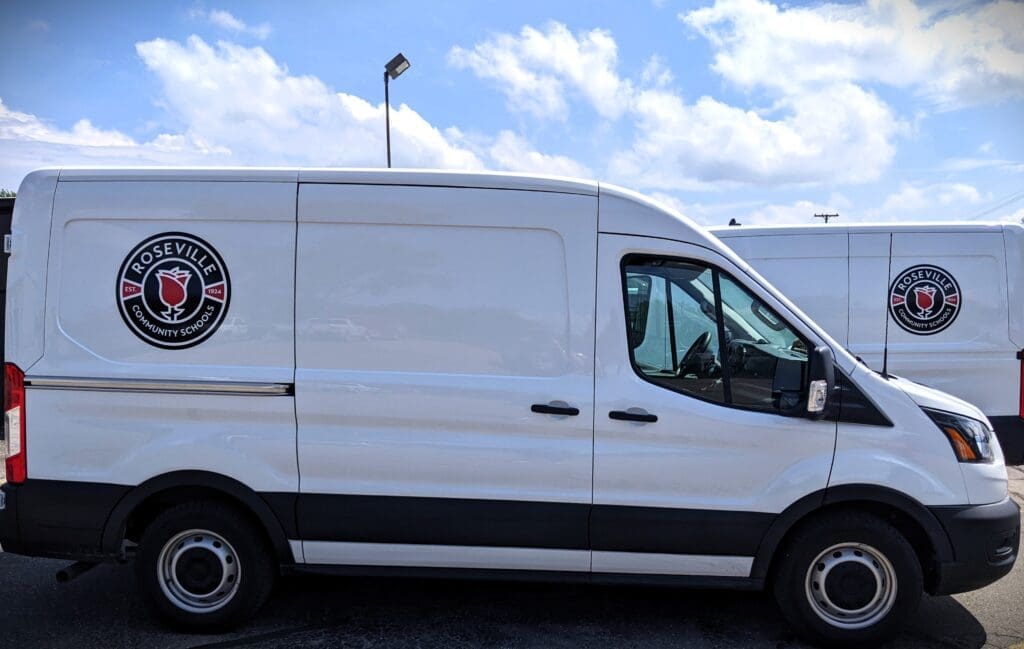
Tips & Tricks for a Perfect Vinyl Installation
Now that we’ve covered the basics let’s sprinkle in some pro tips. These little nuggets of wisdom can transform your vinyl installation from good to great!
- Patience is a Virtue: Take your time during installation. Rushing through it is like skipping the warm-up before a workout – you’re more likely to end up with a few pulled muscles (or, in this case, bubbles and wrinkles).
- Keep it Warm: Vinyl is like a sunbather—it loves warmth. So, try installing your vinyl in a warm environment. It’ll be more flexible and easier to work with.
- Practice Makes Perfect: Don’t be discouraged if your first attempt isn’t perfect. Remember, even Picasso didn’t create a masterpiece on his first try.
There you have it, folks! You’re equipped with everything you need to tackle your vinyl installation project. Now, go forth and transform those surfaces. Happy installing!
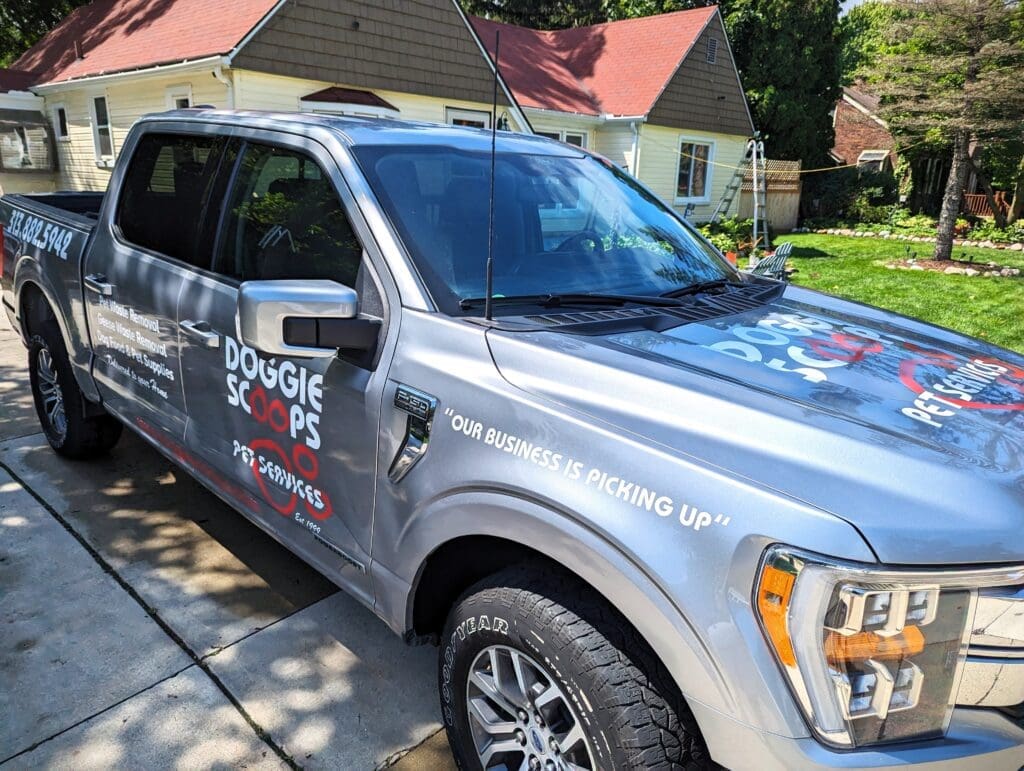
And That’s a Wrap!
Whether you’re team cast or team calendered, remember that choosing the right vinyl for your project is like picking the right tool for a job. Consider the main differences, costs, and other properties, and you’ll always make the best choice. Now, go out there and show ’em what you’re made of! And who knows, you might even discover some other excellent uses for vinyl along the way. The possibilities are endless! So don’t be afraid to get creative and have fun with it. Happy vinyl-ing!
As always, if you need vinyl, Fusion Marketing is here for you. We’ve got a wide selection of cast and calendered vinyl to choose from, as well as expert advice and installation services. Let us help bring your vision to life! Contact us, and let’s get started on your next project.


